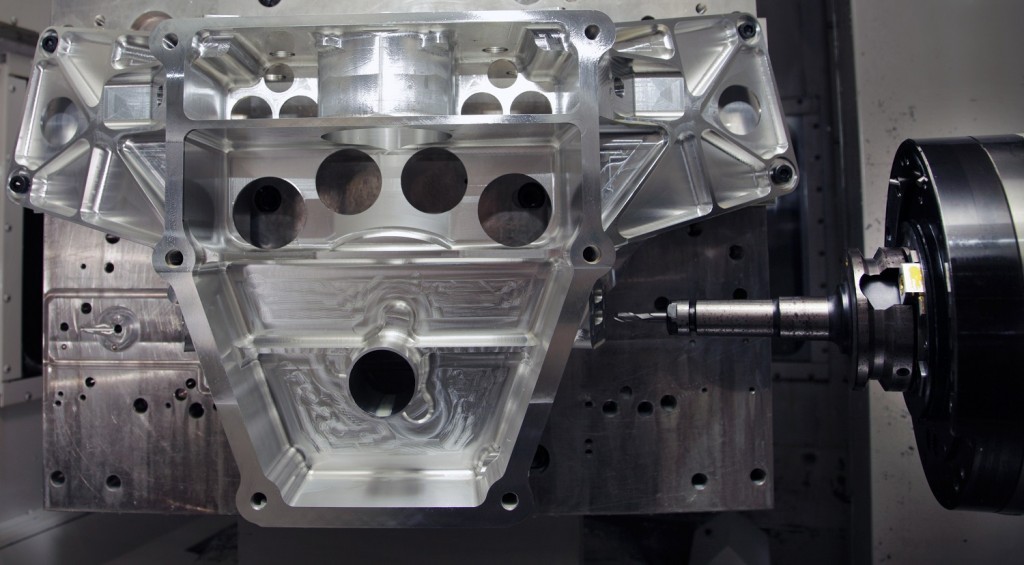
Delcam’s PowerMILL offers an extensive range of strategies for five-axis machining.
Delcam will highlight the latest developments in the companys CAM systems for the programming of five-axis machines at the Canadian Manufacturing Technology Show (CMTS) this September 30th to October 3rd at the International Centre in Mississauga, Ontario.
While the company’s PowerMILL software remains its leading program for the five-axis programming of the most complex shapes found in the toolmaking and aerospace industries, both FeatureCAM, the feature-based CAM system for production machining, and the PartMaker software, for equipment including turn-mill machines, bar-fed mills and Swiss-type lathes, also offer extensive five-axis capabilities.
Five-axis machining continues to become more popular as companies become more aware of its ability to boost productivity by increasing efficiency, improving quality and shortening delivery times. The price of five-axis machines has been falling steadily , while five-axis capabilities that were once only available on large machines are now available on the smaller machining centres used by sub-contractors and toolmakers.
At the same time, developments in five-axis machining software, including the Delcam systems, have made programming for five-axis operations much easier. More sophisticated simulation software has also been introduced, making it easier for the user to check toolpaths on the computer, minimizing any possibility of collisions or gouges.
The first advantage of five-axis machines is that they enable shorter cutters to be used since the head of the machine tool can be lowered towards the job and the cutter oriented towards the surface. These shorter cutters minimize vibration, allowing higher cutting speeds to be used with no loss in accuracy.
Another major benefit of five-axis machining is the ability to machine complex shapes in a single set-up. This saves considerable time compared to performing the job in a series of set-ups. Furthermore, with multiple set-ups, there is always a possibility of incorrect alignment each time the part is moved. With more complex parts, special fixtures need to be made to hold the component firmly during machining. By reducing the number of set-ups, five-axis machining can also save the time and cost of making a multitude of fixtures.
For the latest PowerMILL release, the main change in the five-axis capabilities has been to increase the number of options for tool-axis definition. For faster toolpaths, the lead and lean angles can now be defined relative to a contact normal. In addition, better control is now possible for the tool-axis definition when using the To or From a Point, Line or Curve strategies. These improvements will make it easier for users to control the contact angle between the cutter and the part, and so set the optimum cutting conditions for efficient machining and high quality surface finish.The resulting NC programs can be made even more efficient by automatically reordering the toolpaths, using the tool number or tool diameter, to reduce the number of tool changes, or using a specific workplane, to minimize set-up changes.
New five-axis strategies available in FeatureCAM 2013 include flowline machining between two curves, pencil machining and corner re-machining. These strategies for simultaneous five-axis machining allow a better surface finish to be achieved as well as ensuring access to more areas within the part in a single set-up.
New options from PowerMILL have also been added to give smoother five-axis machining from FeatureCAM. A new look-ahead capability will remove any sudden tool-axis changes during automatic collision avoidance and, instead, ensure that a smooth transition takes place. In addition, FeatureCAM now offers the ability to smooth the Azimuth and Elevation axes independently and so remove excessive five-axis movement. These options stabilize the rotary axis movement by maintaining a fixed tool axis as far as possible, replacing constant five-axis movement with a series of 3+2-axis segments having full five-axis transitions between them.
PartMaker 2013 R2 features much improved simultaneous milling strategies for both four- and five-axis machining, within a new module, ASM-MX (Advanced Surface Machining – Multi-Axis). The module can be added across the entire PartMaker CAM suite, including the PartMaker Mill, Turn-Mill and SwissCAM modules.
The new strategies found in ASM-MX are based on the same unique approach to multi-axis programming used in PowerMILL. This technology enables PartMaker to provide the user with complete tool-axis control for all five-axis simultaneous machining strategies.
Additionally, ASM-MX features a unique new machining strategy called “Spine Finishing”. Spine finishing can be used in either four- or five-axis simultaneous operations and is ideal for machining parts with complex curves, such as angulated abutments found in the dental implant industry.




